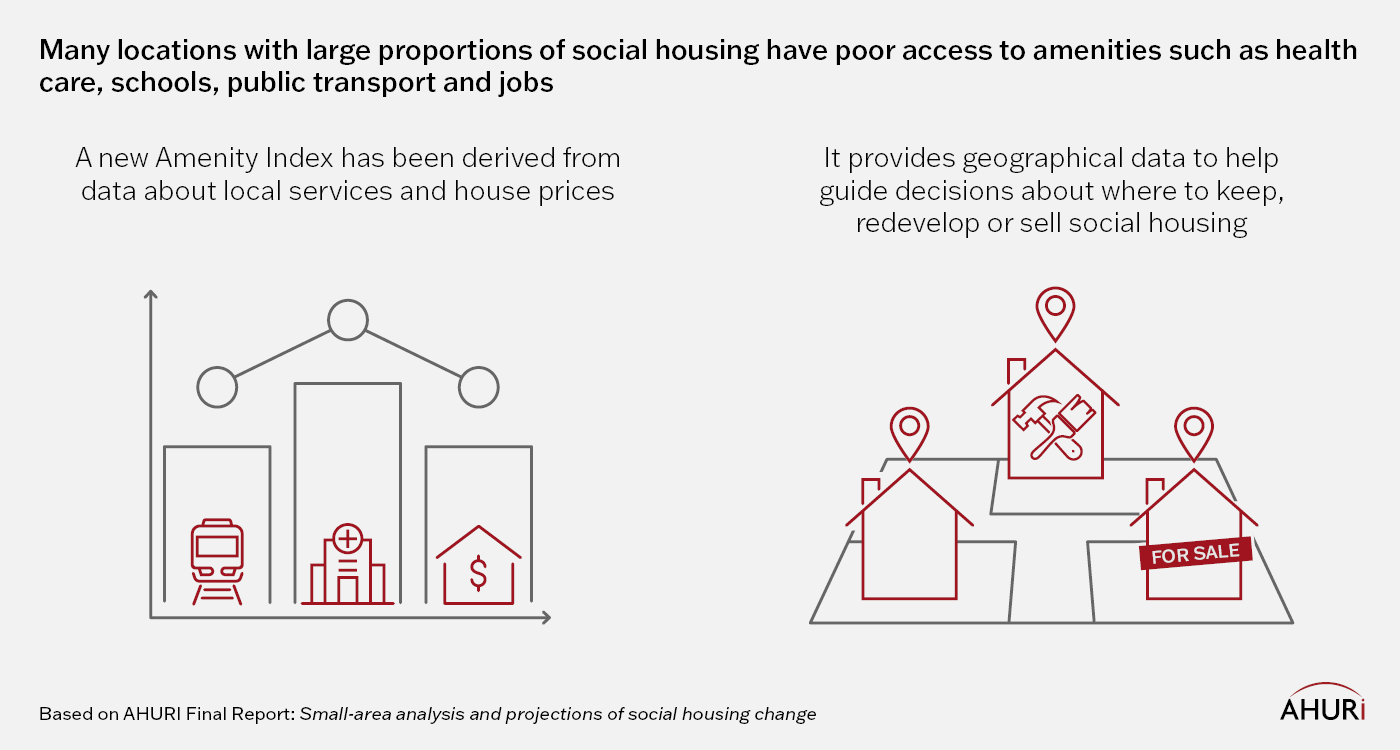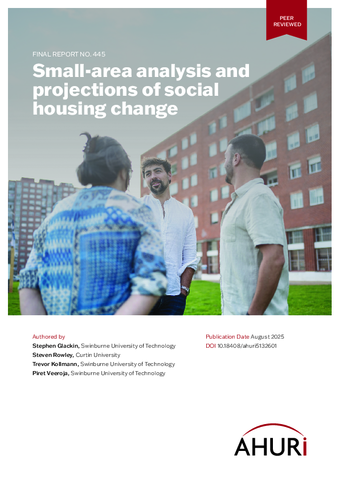What this research is about
This research explores concentrations and density of social housing relative to local amenities and services across Australia. This provides an overview of the distribution, access and value of social housing stock.
The research also develops an Amenity Index. This tool checks whether social housing has good access to local amenities.
Why this research is important
Social housing is often located in areas with lower amenity. High amenity areas have good access to public transport, schools, medical services, employment opportunities and leisure activities. Many social housing tenants don't have cars. Easy access to services is very important for them. This is especially true for people with complex needs who need medical care and other support services.
-
At a glance
-
Key findings
Social housing is not spread evenly across cities and towns. Many high-amenity locations have very little social housing, while many low-amenity locations have a lot of social housing.
Social housing dwellings are becoming higher in density
Social housing is more commonly medium-density housing. This is defined as townhouses and one- to three-storey units. There has also been an increase in high-density (four-plus-storey) stock. In Sydney, 14 per cent of social housing stock is high density. In Melbourne and Brisbane, 18 per cent and 6 per cent of social housing stock respectively are high density.
Selling low-density social housing
In Brisbane and Sydney, there is evidence that low-density dwellings are being sold in favour of higher density units. Melbourne continues to invest in stand-alone housing but is selling medium-density units in favour of higher density ones. In rural areas, particularly in New South Wales, public housing is being transferred to community housing and sold to the private market.
Selling social housing in high-amenity areas makes sense if the aim is to generate the highest amount to fund redevelopment. However, it may not make sense if the aim is to maintain tenant wellbeing or provide for future housing need.
Modelling shows how to increase social housing in areas with good amenities
Modelling shows that changing investment approaches in high-value, high-amenity urban areas could increase total social housing supply by 20 per cent.
This increase would be paid for by selling 30 per cent of existing low-density social housing to private buyers. The funding would be used to develop medium-density social housing. Retaining social housing in high- and medium-amenity areas is preferable to building new social housing in low-amenity areas.
The Amenity Index measures ‘well located’ social housing
The Amenity Index, created for this report, shows the level of access to services for local areas. It provides data to help make decisions about where to retain, redevelop and sell social housing.
-
Policy actions
Not only is there a need for more social housing but that housing must have good access to amenities. This research modelled what it would take for social housing to make up 5 per cent of all housing.
To reach this target, Australia would need an extra 137,600 units. This would cost about $69 billion. There is therefore an opportunity to increase supply in locations that would help tenants most.
There is a need for better social housing data
Better access to more accurate social housing data would help the sector. Providing Australian Institute of Health and Welfare (AIHW) data at a smaller scale would lead to better, more accurate results. Providing a federal clearinghouse for social housing data would also assist, and would help governments and researchers work together better.
-
Research design
This research looked at data from the Australian Bureau of Statistics, OpenStreetMap, Australian Property Monitors and AIHW. It included modelling of housing costs, as well as development of the Amenity Index. It also used regression analysis to examine whether densification of social housing has been occurring.



